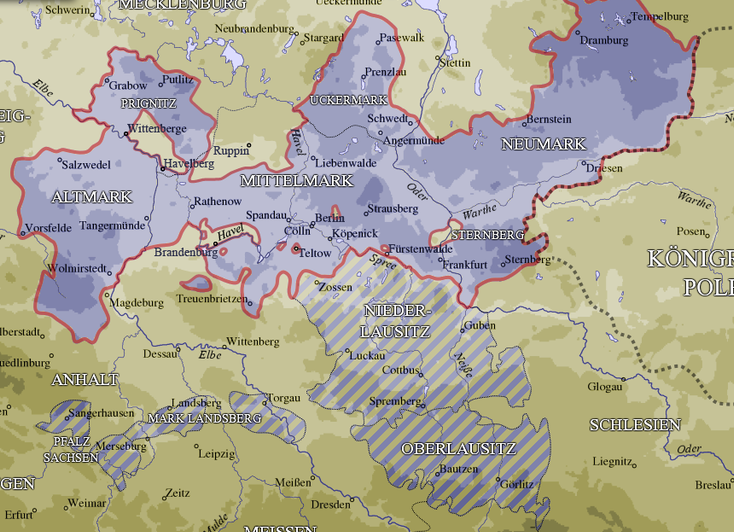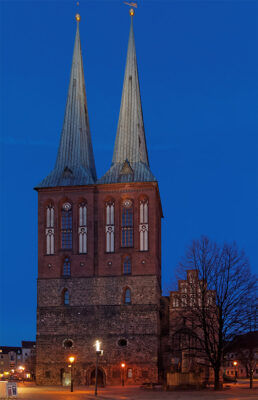Baby
After the year 1200 with the efforts of Albert’s successors, the Margraviate of Brandenburg started to grow and so did the twin towns on the Spree, (alte) Berlin in the northeast and (alte) Cölln in the southwest. In 1220 two brothers Otto III and John, became the new Margraves ruling Brandenburg as one. They consolidated the position of the principality within the Holy Roman Empire with Otto III even placing himself as the candidate King of the Germans. Their decision to make the Ascanian castle in nearby Spandau their official residence further spurred the twin cities’ growth.
By the year 1250, the two towns were connected with a bridge at the Mühlendamm, which spanned from the Molkenmarkt the biggest open market of Berlin until the end of the 13th century, to the Kölln fish market on today’s Spree island. At the same time, the bridge served as a dam for the watermills that were operated from 1220 onwards. Six grain, fulling, and cutting mills lay across the river, only a middle section was kept free to the ship passage.



Nicolaikirche about a hundred meters west of the Molkenmarkt, Marienfelde Church, Jesus Church of Kaulsdorf, Franziskaner-Klosterkirche, Karow Church, all had been built in and around Berlin, and Kölln a sign of a growing population that was probably around 2000 people in the mid 13th century. In what is Alexanderplatz today a hospital named Heiliger Georg (St. George), gave its name to the nearby Georgentor (George Gate) of the Berlin city wall. Around the same time, we have the first recorded town seal that depicts the Brandenburg Eagle adopted in the 10th century by the German Margraves and two bears on the left and right. The text on the seal writes “Sigillum de Berlin Burgensium” (the seal of Berlin’s citizens).

